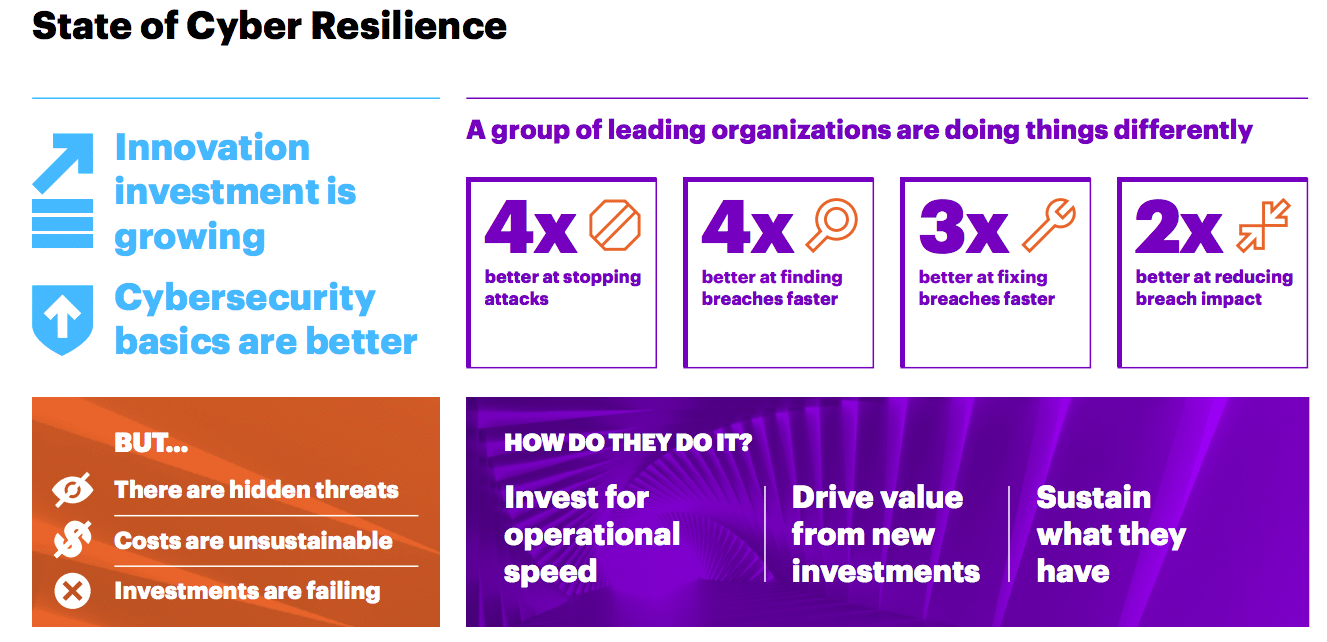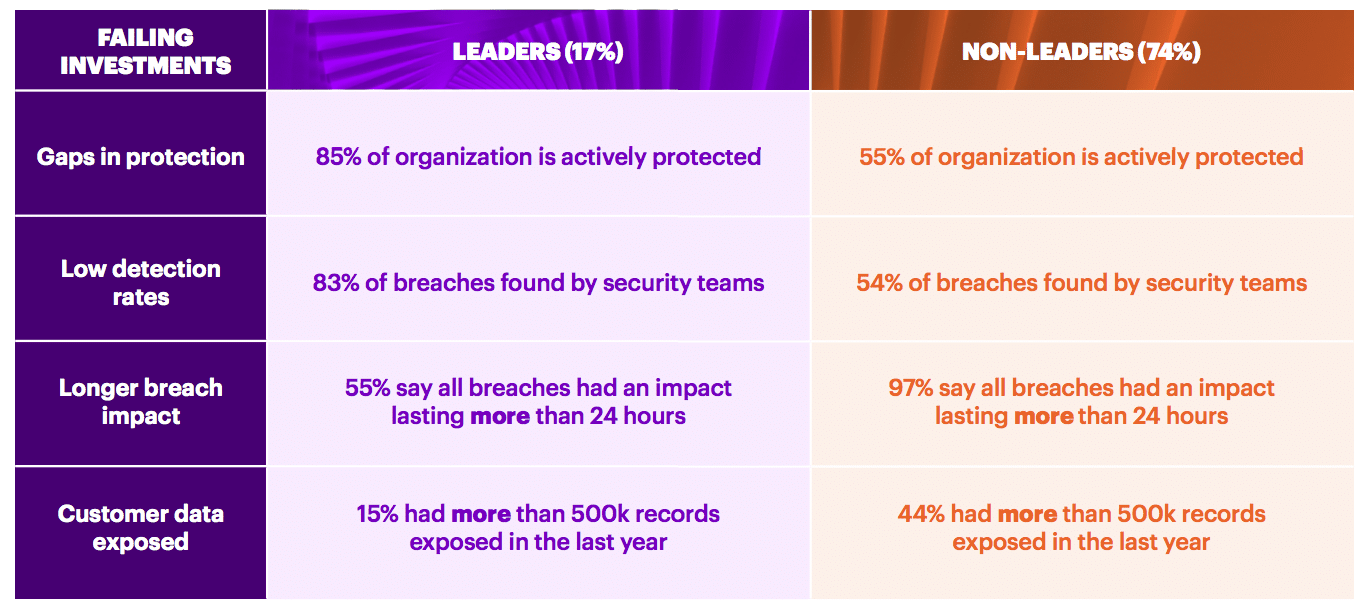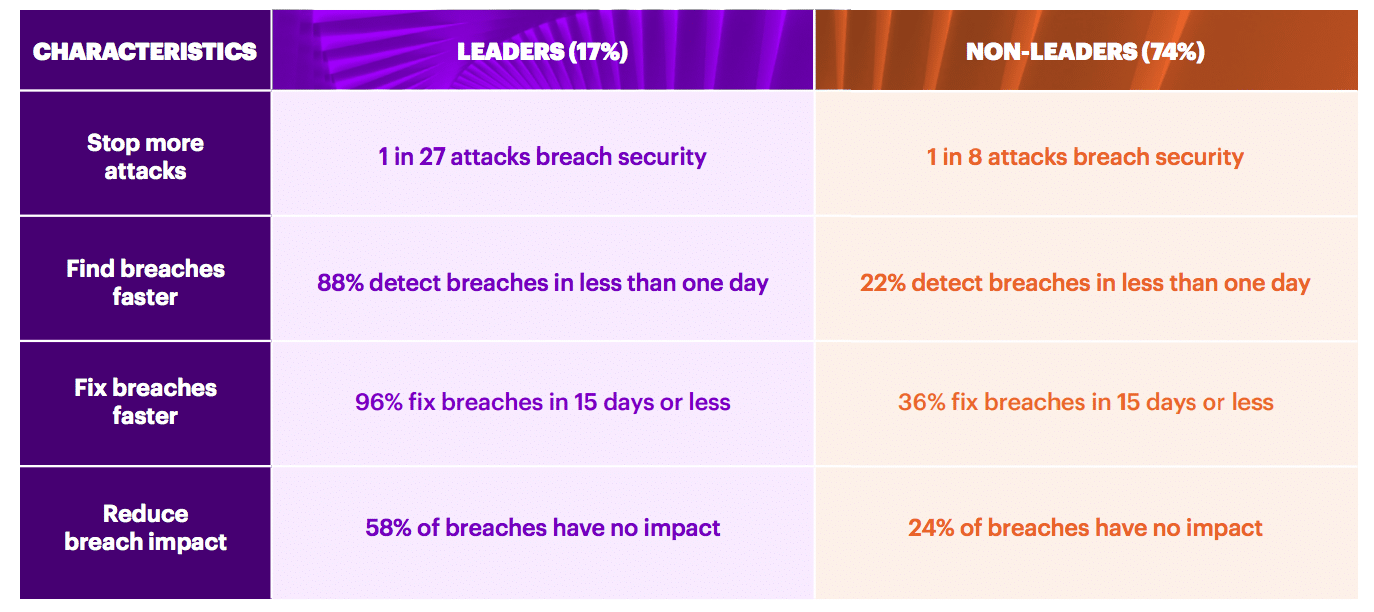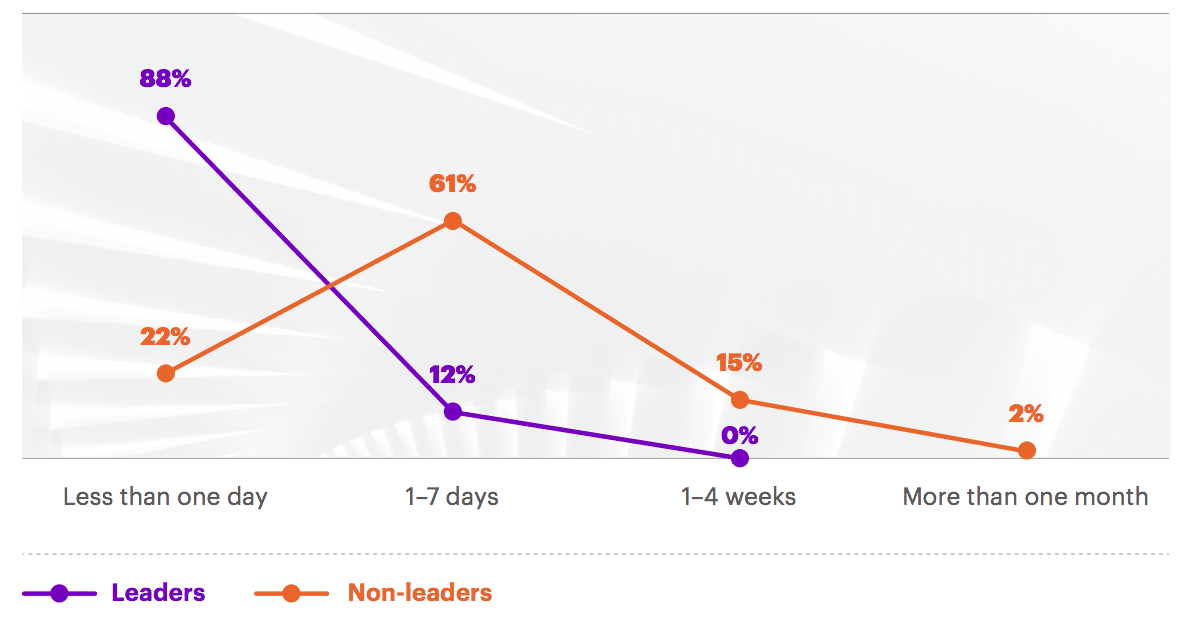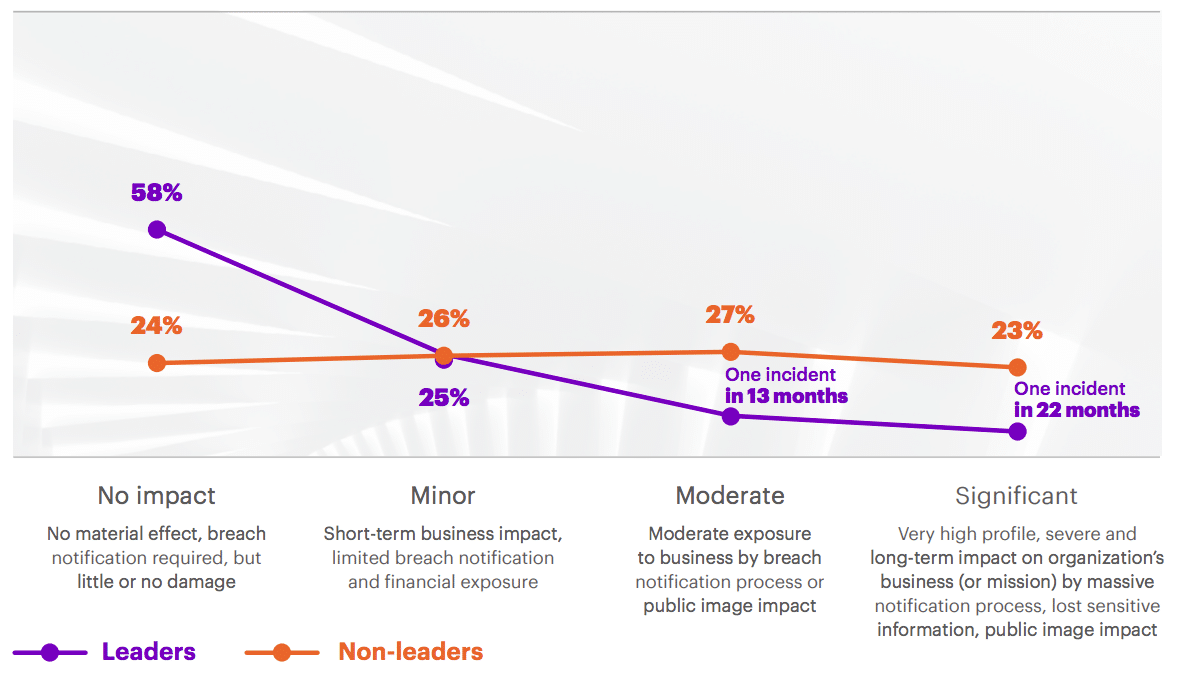Over the last several years, data breaches at numerous companies such as Target and Equifax have catapulted data security and privacy to the top of consumers’ brand demands. But despite higher levels of investment in advanced cybersecurity technologies, less than 20 percent of brands and businesses are effectively stopping cyberattacks and finding and fixing breaches fast enough to lower the impact, according to new research from Accenture.
Based on a survey of more than 4,600 enterprise security practitioners around the globe, the firm’s third annual State of Cyber Resilience study explores the extent to which organizations prioritize security, the effectiveness of current security efforts, and the impact of new security-related investments.
Cyber resilience leaders vs. non-leaders
From detailed modeling of cybersecurity performance, the study identified a group of elite “leaders”—17 percent of the research sample—that achieve significantly better results from their cybersecurity technology investments than other organizations. Leaders were characterized as among the highest performers in at least three of the following four categories
- Stopping more attacks
- Finding breaches faster
- Fixing breaches faster, and
- Reducing breach impact
The study identified a second group, comprising 74 percent of the respondents, as “non-leaders”—average performers in terms of cyber resilience, but far from being laggards.
“Our analysis identifies a group of standout organizations that appear to have cracked the code of cybersecurity when it comes to best practices,” said Kelly Bissell, who leads Accenture Security globally, in a news release. “Leaders in our survey are far quicker at detecting a breach, mobilizing their response, minimizing the damage and getting operations back to normal.”
Comparison of failing security investments, leaders vs. non-leaders:
How leaders outperform the rest
For instance, leaders were four times more likely than non-leaders to detect a breach in less than one day (88 percent vs. 22 percent). And when defenses fail, nearly all (96 percent) of the leaders fixed breaches in 15 days or less, on average, whereas nearly two-thirds (64 percent) of non-leaders took 16 days or longer to remediate a breach—with nearly half of those taking more than a month.
“When a cyberattack prevents a pharmaceutical company from manufacturing drugs or a ship from docking at port—those are the kinds of crippling business impacts we’re most concerned about helping our clients avoid,” said Ryan LaSalle, who leads Accenture Security in North America, In the release. “If investments in technology don’t hit the mark when it comes to defending against cyberattacks, C-suite executives are not only jeopardizing their operations and finances but their brands and reputations as well.”
Among the key differences in cybersecurity practices between leaders and non-leaders, the report identified:
- Leaders focused more of their budget allocations on sustaining what they already have, whereas the non-leaders place significantly more emphasis on piloting and scaling new capabilities.
- Leaders were nearly three times less likely to have had more than 500,000 customer records exposed through cyberattacks in the last 12 months (15percentvs. 44percent).
- Leaders were more than three times as likely to provide users of security tools with required training for those tools (30percentvs. 9percent).
Average time to detect a security breach:
Added challenges of cyber resilience
The study also found that more than four in five respondents (83 percent) believe that organizations need to think beyond securing just their own enterprises and take better steps to secure their vendor ecosystems. Additionally, while cybersecurity programs designed to protect data and other key assets are only actively protecting about 60 percent of an organization’s business ecosystem, which includes vendors and other business partners, 40 percent of breaches come through this route.
“The sizable number of vendor relationships that most organizations have poses a significant challenge to their ability to monitor that business ecosystem,” Bissell said. “Yet, given the large percentage of breaches that originate in an organization’s supply chain, companies need to ensure that their cyber defenses stretch beyond their own walls.”
Security breaches by level of impact:
Download the full report here.
Accenture Research surveyed 4,644 executives representing companies with annual revenues of at least $1 billion in 24 industries and 16 countries across North and South America, Europe and Asia Pacific. Nearly all respondents (98 percent) were the sole or key decision-maker regarding their organization’s cybersecurity strategy and spending. The study was fielded from April to May 2019.


